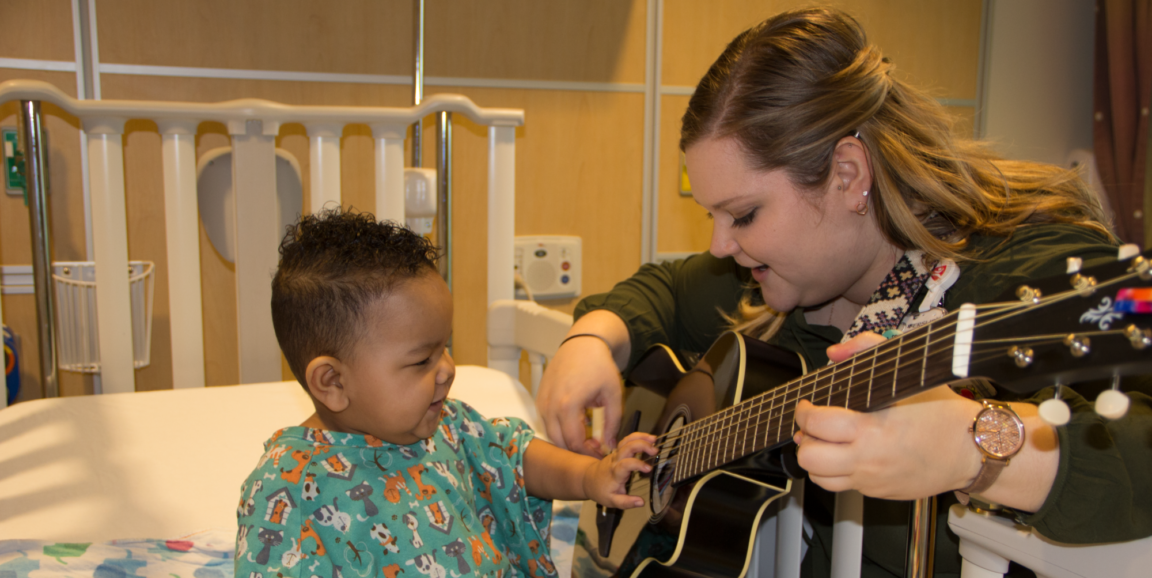Tambourines, maracas, lollipop drums and a guitar: These are tools of the trade for Cassi Crouse, a therapist with the growing music therapy program at Lucile Packard Children’s Hospital Stanford.
Her job is to help young patients through the emotions of hospitalization by singing them their favorite songs and offering them an assortment of instruments to play.
As she explained in a recent blog post for Stanford Children’s Health:
As a music therapist I use music to provide opportunities for emotional expression and exploration. A way I do that is through instrumental play, so asking, ‘Can you play what it feels like to be happy? Can you play what it feels like to be sad?’ This is a process of walking them through emotions, and that way I am not putting them on the spot saying, ‘How do you feel today?’ I use music to get them to a more comfortable place where they can identify how they are feeling in that moment. With older patients, I use song writing and lyric analysis to talk about feelings and what their hospitalizations have been like.
Crouse’s approach to each patient depends on his or her individual needs. She eased a 13-year-girl through a PICC line placement by with a playlist of the girl’s favorite songs that they compiled together. For an 11-month-old baby in the NICU, Crouse selected a melody that was soft, steady and slow, to avoid overstimulating the child.
In the NICU, music can also be helpful for the parents of the tiny patients, she said in the blog post:
There are a lot of machines, tubes and wires that are required to help the infants. I find a lot of times parents are not sure how to interact with their baby. Music is a fantastic way to foster and promote bonding.
Crouse is happily low-tech, toting a cart full of noisemakers for children of all ages, along with a guitar for her own singing. However, she’s working on a new project that combines a patient’s heartbeat with background music. As she explains in the story:
There’s a little microphone that plugs into the stethoscope, and then that plugs into an iPad or a computer and the patient’s heartbeat is recorded. From there, whoever I am working with would identify a song that is meaningful to them. The heartbeat serves as the rhythm for the music, and it is the beat that drives the song. Then we record the music on top of it to create something that is original and memorable for the patient and family.
Photo of music therapist Cassi Crouse working with Tyson, a 18-month-old patient, by Stanford Children’s Health




